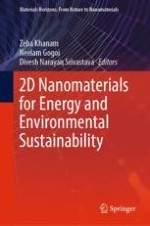2022 | OriginalPaper | Chapter
11. Fate of 2D Nanomaterials and Their Toxic Effects on the Environment and Human Health
Authors : Achyut Konwar, Jayanta Sarmah Boruah, Kabyashree Phukan, Sazzadur Rahman
Published in: 2D Nanomaterials for Energy and Environmental Sustainability
Publisher: Springer Nature Singapore
Activate our intelligent search to find suitable subject content or patents.
Select sections of text to find matching patents with Artificial Intelligence. powered by
Select sections of text to find additional relevant content using AI-assisted search. powered by
